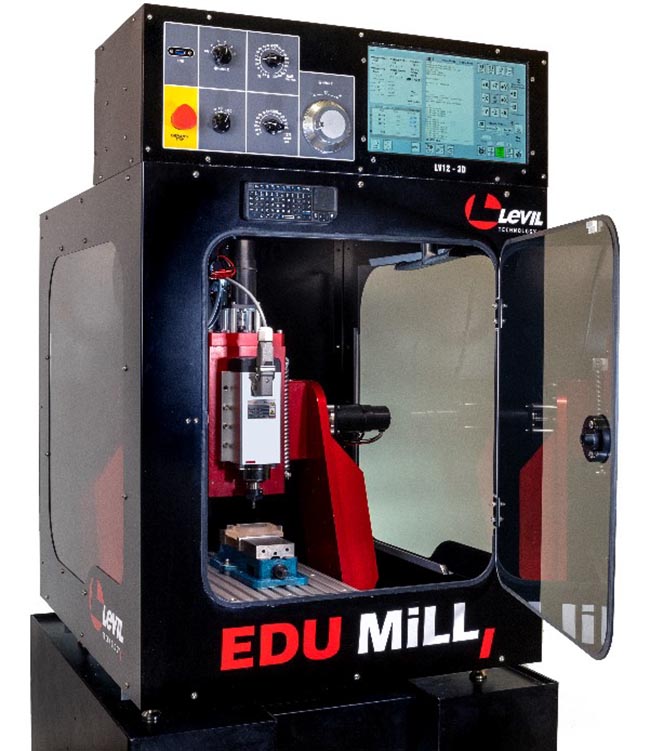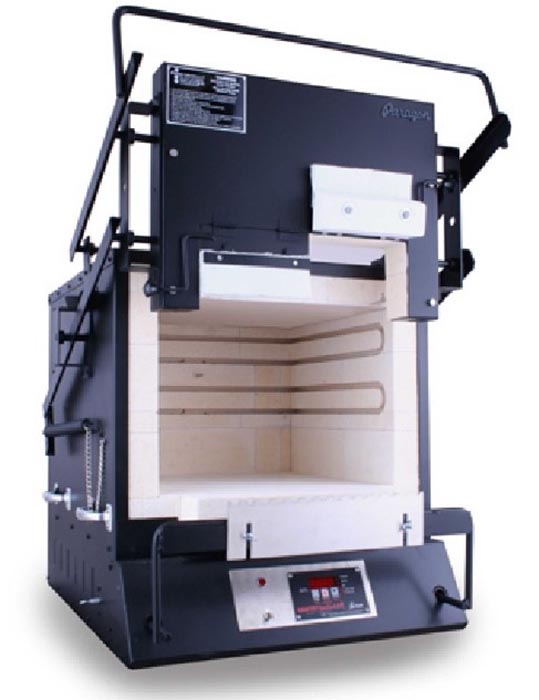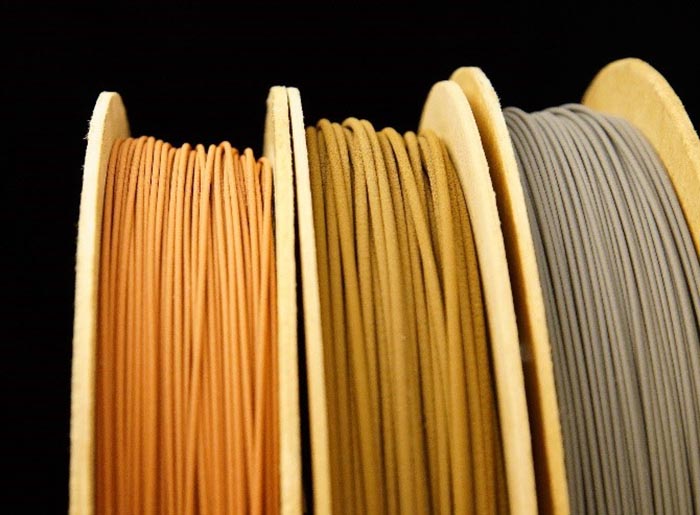As a developer of bound metal 3D printing filament, The Virtual Foundry is, in this author’s opinion, one of the more overlooked companies in the 3D printing industry. Now, the company has pushed its business even further by launching an all-inclusive desktop metal 3D printing lab.
The Virtual Foundry announced that it has partnered with Levil Technology, along with its usual sintering service partner, Sapphire 3D, to create a complete kit for metal 3D printing. In addition to the company’s metal 3D printing filaments and a kiln from Sapphire 3D, the kit comes with a Levil EDU-Mill, a modular system with swappable parts to switch from milling to 3D printing.
The EDU-Mill is available with three options for the control system, a budget version made by Levil, or a Mitsubishi or Fanuc controller, two of the most common control systems in manufacturing education. With some schools teaching Mitsubishi and others teaching Fanuc, the kit can be configured for what best suits a given curriculum.
Altogether, the kit is meant to provide all of the tools to get started with a desktop metal 3D printing lab. With the 3D printer and filaments, it’s possible to produce green 3D printed metal parts that can then be sintered in the Sapphire 3D kiln and, finally, CNC’d with the Levil EDU-Mill.
According to Founder and CEO of The Virtual Foundry, Bradley Woods, Levil was a perfect partner for the kit. “Levil had already developed their presence in the education market before we met. This went along with our objective of getting our technology into the hands of younger engineers. We believe they will use our technology to create a whole new generation of applications and solutions. We’re thinking big and have every expectation that we will have some effect on the world at-large,” Woods told 3DPrint.com.
In previous articles, I and Executive Editor Joris Peels have pointed out the opportunity for a new crop of service bureaus to spring up using low-cost metal 3D printing with materials from companies like The Virtual Foundry and furnaces from companies like Sapphire 3D. While this product is marketed for lab and educational environments, I see it as a potential stepping-stone toward low-cost metal 3D printing bureaus.
In fact, according to Woods, Sapphire 3D may have been the first such company to spring up around The Virtual Foundry’s products.
“Sapphire 3D was actually an enthusiastic end-user that wound up building a business around our materials. He’s one of our early adopters that instantly understood the long-term potential,” Woods said.
As it stands, the principal way for customers to obtain metal parts using these types of filaments is to 3D print them on a desktop machine and then have them sintered elsewhere. Otherwise, they might turn to a company like Sculpteo, which offers BASF’s sole metal filament offering.
Meanwhile, there are now three primary choices for machines that could 3D print in low-cost metal, but the cost and quality compared to printing filaments from The Virtual Foundry has yet to undergo substantial scrutiny. These systems are the Metal X from Markforged, the Studio 2 from Desktop Metal and the Metal Designlab from ExOne.
HP and ExOne have already demonstrated the possibilities of bound metal printing for use with other sinterable materials, such as ceramics. We may see the aforementioned low-cost machines offer other materials, as well. The Virtual Foundry already has several non-sinterable filaments.
“We have ceramics and will soon have different types of glass in our store,” Woods said. “But I try to make it clear that we actually make custom materials for a variety of technologies. We’ve made piezoelectric 3D filament. We’ve made multiple materials for printing in-situ thermoelectric devices. We’ve made 3D printable electromagnetic material for cores in motors, etc. The concept just kind of goes and goes. Someone will say, ‘We saw that you made this material for X, think you could do this similar solution for us but using Y?’”
So, it will be interesting if The Virtual Foundry takes its kit concept a step further for complete print farm setups. However, Woods noted that the company’s biggest customers are in research spaces.
“Our key innovators right now, as in existing The Virtual Foundry customers, are primarily in research. National Labs are using our technology to solve problems in everything from space travel, to fission and fusion energy,” Woods said. “We sell our materials and make custom materials for over a dozen different National Labs and about a half dozen labs doing work for NASA. I was invited to Lockheed-Martin a couple years ago to present our technology to an annual gathering of their engineers. The people operating at that level understand the importance of accessible and low-cost 3D metal. We believe the rest of the world is starting to understand the potential applications, but it’s been a long haul.”
Given the fact SmarTech Analysis predicts bound metal technologies to achieve close to twice the growth rate than the overall metal AM market over the next ten years, The Virtual Foundry is one business that may benefit greatly from that growth.
Subscribe to Our Email Newsletter
Stay up-to-date on all the latest news from the 3D printing industry and receive information and offers from third party vendors.
You May Also Like
3D Printing Financials: Fathom Struggles in Financial Quicksand During Critical Transition
Facing a year of key transitions and financial pressures, Fathom (Nasdaq: FTHM) has filed its annual report for 2023 with the U.S. Securities and Exchange Commission (SEC). The document outlines...
Latest Earnings Overview for Australian 3D Printing Firms Titomic and AML3D
Australian 3D printing manufacturing firms Titomic (ASX: TTT) and AML3D (ASX: AL3) reported their financial results for the period from July to December 2023, marking the first half of their...
3D Printing Webinar and Event Roundup: April 7, 2024
Webinars and events in the 3D printing industry are picking back up this week! Sea-Air-Space is coming to Maryland, and SAE International is sponsoring a 3D Systems webinar about 3D...
3D Printing Financials: Unpacking Farsoon and BLT’s 2023 Performance
In the Chinese 3D printing industry, two companies, Farsoon (SHA: 688433) and Bright Laser Technologies, or BLT (SHA: 688333), have recently unveiled their full-year earnings for 2023. Farsoon reported increases...


































